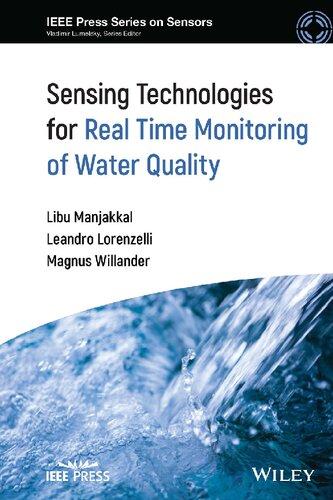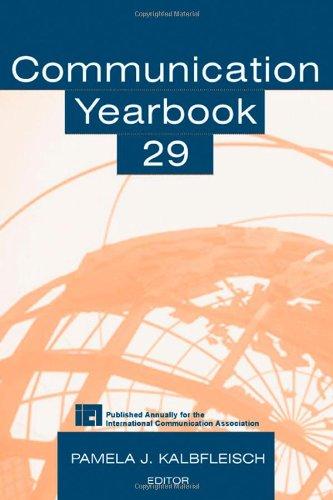Sensing Technologies for Real Time Monitoring of Water Quality
Libu Manjakkal
University of Glasgow, Glasgow, UK
Edinburgh Napier University, Edinburgh, UK
Leandro Lorenzelli
Fondazione Bruno Kessler, Trento, Italy
Magnus Willander
Linköping University, Linköping, Sweden
IEEE Press Series on Sensors
Vladimir Lumelsky, Series Editor
Copyright © 2023 by The Institute of Electrical and Electronics Engineers, Inc. All rights reserved.
Published by John Wiley & Sons, Inc., Hoboken, New Jersey.
Published simultaneously in Canada.
No part of this publication may be reproduced, stored in a retrieval system, or transmitted in any form or by any means, electronic, mechanical, photocopying, recording, scanning, or otherwise, except as permitted under Section 107 or 108 of the 1976 United States Copyright Act, without either the prior written permission of the Publisher, or authorization through payment of the appropriate per-copy fee to the Copyright Clearance Center, Inc., 222 Rosewood Drive, Danvers, MA 01923, (978) 750-8400, fax (978) 750-4470, or on the web at www.copyright.com. Requests to the Publisher for permission should be addressed to the Permissions Department, John Wiley & Sons, Inc., 111 River Street, Hoboken, NJ 07030, (201) 748-6011, fax (201) 748-6008, or online at http://www.wiley.com/go/permission.
Trademarks: Wiley and the Wiley logo are trademarks or registered trademarks of John Wiley & Sons, Inc. and/or its affiliates in the United States and other countries and may not be used without written permission. All other trademarks are the property of their respective owners. John Wiley & Sons, Inc. is not associated with any product or vendor mentioned in this book.
Limit of Liability/Disclaimer of Warranty: While the publisher and author have used their best efforts in preparing this book, they make no representations or warranties with respect to the accuracy or completeness of the contents of this book and specifically disclaim any implied warranties of merchantability or fitness for a particular purpose. No warranty may be created or extended by sales representatives or written sales materials. The advice and strategies contained herein may not be suitable for your situation. You should consult with a professional where appropriate. Further, readers should be aware that websites listed in this work may have changed or disappeared between when this work was written and when it is read. Neither the publisher nor authors shall be liable for any loss of profit or any other commercial damages, including but not limited to special, incidental, consequential, or other damages.
For general information on our other products and services or for technical support, please contact our Customer Care Department within the United States at (800) 762-2974, outside the United States at (317) 572-3993 or fax (317) 572-4002.
Wiley also publishes its books in a variety of electronic formats. Some content that appears in print may not be available in electronic formats. For more information about Wiley products, visit our web site at www.wiley.com.
Library of Congress Cataloging-in-Publication Data:
Names: Manjakkal, Libu, author. | Lorenzelli, Leandro, author. | Willander, Magnus, author.
Title: Sensing technologies for real time monitoring of water quality / Libu Manjakkal, Leandro Lorenzelli, Magnus Willander.
Description: Hoboken, New Jersey : Wiley-IEEE Press, [2023] | Includes index.
Identifiers: LCCN 2023012128 (print) | LCCN 2023012129 (ebook) | ISBN 9781119775812 (cloth) | ISBN 9781119775829 (adobe pdf) | ISBN 9781119775836 (epub)
Subjects: LCSH: Water quality–Measurement. | Water quality–Remote sensing. | Intelligent sensors.
Classification: LCC TD367 .M3175 2023 (print) | LCC TD367 (ebook) | DDC 628.1/61–dc23/eng/20230422
LC record available at https://lccn.loc.gov/2023012128
LC ebook record available at https://lccn.loc.gov/2023012129
Cover Design: Wiley
Cover Image: © webphotographeer/Getty Images
Set in 9.5/12.5pt STIXTwoText by Straive, Pondicherry, India
Contents
About the Editors xiii
List of Contributors xv
Preface xix
Section I Materials and Sensors Development Including Case Study 1
1 Smart Sensors for Monitoring pH, Dissolved Oxygen, Electrical Conductivity, and Temperature in Water 3 Kiranmai Uppuluri
1.1 Introduction 3
1.2 Water Quality Parameters and Their Importance 4
1.2.1 Impact of pH on Water Quality 4
1.2.2 Impact of Dissolved Oxygen on Water Quality 5
1.2.3 Impact of Electrical Conductivity on Water Quality 5
1.2.4 Impact of Temperature on Water Quality 5
1.3 Water Quality Sensors 6
1.3.1 pH 7
1.3.1.1 pH Sensors: Principles, Materials, and Designs 7
1.3.1.2 Glass Electrode 7
1.3.1.3 Solid-State Ion-Selective Electrodes 8
1.3.1.4 Metal Oxide pH Sensors 8
1.3.2 Dissolved Oxygen 10
1.3.2.1 DO Sensors: Principles, Materials, and Designs 10
1.3.2.2 Chemical Sensors 10
1.3.2.3 Electrochemical Sensors 11
1.3.2.4 Optical or Photochemical Sensors 12
1.3.3 Electrical Conductivity 13
1.3.3.1 Conductivity Sensors: Principles, Materials, and Designs 13
1.3.4 Temperature 15
1.3.4.1 Temperature Sensors: Principles, Materials, and Designs 16
1.3.4.2 Thermocouples 17
1.3.4.3 Resistance Temperature Detector 17
1.3.4.4 Thermistor 17
1.3.4.5 Integrated Circuit 18
1.4 Smart Sensors 18
1.5 Conclusion 18
Acknowledgment 19
References 19
2 Dissolved Heavy Metal Ions Monitoring Sensors for Water Quality Analysis 25
Tarun Narayan, Pierre Lovera, and Alan O’Riordan
2.1 Introduction 25
2.2 Sources and Effects of Heavy Metals 26
2.3 Detection Techniques 26
2.3.1 Analytical Detection: Conventional Detection Techniques of Heavy Metals 26
2.3.2 Electrochemical Detection Techniques of Heavy Metals 26
2.3.2.1 Nanomaterial-Modified Electrodes 29
2.3.2.2 Metal Nanoparticle-Based Modification 29
2.3.2.3 Metal Oxide Nanoparticle-Based Modification 33
2.3.2.4 Carbon Nanomaterials-Based Modification 34
2.3.3 Biomolecules Modification for Heavy Metal Detection 35
2.3.3.1 Antibody-Based Detection 35
2.3.3.2 Nucleic Acid-Based Detection 37
2.3.3.3 Cell-Based Sensor 38
2.4 Future Direction 40
2.5 Conclusions 40
Acknowledgment 41
References 42
3 Ammonia, Nitrate, and Urea Sensors in Aquatic Environments 51
Fabiane Fantinelli Franco
3.1 Introduction 51
3.2 Detection Techniques for Ammonia, Nitrate, and Urea in Water 53
3.2.1 Spectrophotometry 53
3.2.2 Fluorometry 54
3.2.3 Electrochemical Sensors 54
3.3 Ammonia 59
3.3.1 Ammonia in Aquatic Environments 59
3.3.2 Ammonia Detection Techniques 62
3.4 Nitrate 65
3.4.1 Nitrate in Aquatic Environments 65
3.4.2 Nitrate Detection Techniques 65
3.5 Urea 67
3.5.1 Urea in Aquatic Environment 67
3.5.2 Urea Detection Techniques 69
3.6 Conclusion and Future Perspectives 71
Acknowledgment 71
References 71
4 Monitoring of Pesticides Presence in Aqueous Environment 77
Yuqing Yang, Pierre Lovera, and Alan O’Riordan
4.1 Introduction: Background on Pesticides 77
4.1.1 Types and Properties 77
4.1.2 Risks 78
4.1.3 Regulation and Legislation 79
4.1.4 Occurrence of Pesticide Exceedance 80
4.2 Current Pesticides Detection Methods 80
4.2.1 Detection of Pesticides Based on Electrochemical Methods 82
4.2.1.1 Brief Overview of Electrochemical Methods 82
4.2.1.2 Detection of Pesticides by Electrochemistry 82
4.2.2 Detection of Pesticides Based on Optical Methods 83
4.2.2.1 Detection of Pesticides Based on Fluorescence 87
4.2.3 Detection of Pesticides Based on Raman Spectroscopy 89
4.2.3.1 Introduction to SERS 89
4.2.3.2 Fabrication of SERS Substrates 91
4.2.3.3 Detection of Pesticide by SERS 92
4.2.3.4 Challenges and Future Perspectives 95
4.3 Conclusion 96
Acknowledgment 96
References 96
5 Waterborne Bacteria Detection Based on Electrochemical Transducer 107
Nasrin Razmi, Magnus Willander, and Omer Nur
5.1 Introduction 107
5.2 Typical Waterborne Pathogens 108
5.3 Traditional Diagnostic Tools 108
5.4 Biosensors for Bacteria Detection in Water 110
5.4.1 Common Bioreceptors for Electrochemical Sensing of Foodborne and Waterborne Pathogenic Bacteria 110
5.4.1.1 Antibodies 111
5.4.1.2 Enzymes 111
5.4.1.3 DNA and Aptamers 111
5.4.1.4 Phages 112
5.4.1.5 Cell and Molecularly Imprinted Polymers 112
5.4.2 Nanomaterials for Electrochemical Sensing of Waterborne Pathogenic Bacteria 112
5.4.2.1 Metal and Metal Oxide Nanoparticles 113
5.4.2.2 Conducting Polymeric Nanoparticles 114
5.4.2.3 Carbon Nanomaterials 114
5.4.2.4 Silica Nanoparticles 114
5.5 Various Electrochemical Biosensors Available for Pathogenic Bacteria Detection in Water 115
5.5.1 Amperometric Detection 115
5.5.2 Impedimetric Detection 121
5.5.3 Conductometric Detection 123
5.5.4 Potentiometric Detection 124
5.6 Conclusion and Future Prospective 126 Acknowledgment 127
References 127
6 Zinc Oxide-Based Miniature Sensor Networks for Continuous Monitoring of Aqueous pH in Smart Agriculture 139 Akshaya Kumar Aliyana, Aiswarya Baburaj, Naveen Kumar S. K., and Renny Edwin Fernandez
6.1 Introduction 139
6.2 Metal Oxide-Based Sensors and Detection Methods 140
6.3 pH Sensor Fabrication 141
6.3.1 Detection of pH: Materials and Method 141
6.3.2 Detection of pH: Surface Morphology of the Nanostructured ZnO and IDEs 144
6.3.3 Detection of pH: Electrochemical Sensing Performance 145
6.3.4 Detection of Real-Time pH Level in Smart Agriculture: Wireless Sensor Networks and Embedded System 149
6.4 Conclusion 151
Acknowledgment 152
References 152
Section II Readout Electronic and Packaging 161
7 Integration and Packaging for Water Monitoring Systems 163 Muhammad Hassan Malik and Ali Roshanghias
7.1 Introduction 163
7.2 Advanced Water Quality Monitoring Systems 167
7.2.1 Multi-sensing on a Single Chip 167
7.2.2 Heterogeneous Integration 169
7.2.3 Case Study: MoboSens 169
7.3 Basics of Packaging 171
7.4 Hybrid Flexible Packaging 173
7.4.1 Interconnects 174
7.4.2 Thin Die Embedding 176
7.4.3 Encapsulation and Hermeticity 178
7.4.4 Roll to Roll Assembly 180
7.5 Conclusion 181 References 181
8 A Survey on Transmit and Receive Circuits in Underwater Communication for Sensor Nodes 185 Noushin Ghaderi and Leandro Lorenzelli
8.1 Introduction 185
8.2 Sensor Networks in an Underwater Environment 186
8.2.1 Acoustic Sensor Network 186
8.2.1.1 Energy Sink-Hole Problem 187
8.2.1.2 Acoustic Sensor Design Problems 188
8.2.1.3 The Underwater Transducer 189
8.2.1.4 Amplifier Design 190
8.2.1.5 Analog-to-Digital Converter 194
8.2.2 Electromagnetic (EM) Waves Underwater Sensors 197
8.2.2.1 Antenna Design 198
8.2.2.2 Multipath Propagation 198
8.3 Conclusion 199 Acknowledgment 199 References 200
Section III Sensing Data Assessment and Deployment Including Extreme Environment and Advanced Pollutants 203
9 An Introduction to Microplastics, and Its Sampling Processes and Assessment Techniques 205 Bappa Mitra, Andrea Adami, Ravinder Dahiya, and Leandro Lorenzelli
9.1 Introduction 205
9.1.1 Properties of Microplastics 208
9.1.2 Microplastics in Food Chain 209
9.1.3 Human Consumption of Microplastics and Possible Health Effects 209
9.1.4 Overview 210
9.2 Microplastic Sampling Tools 212
11 Sensors for Water Quality Assessment in Extreme Environmental Conditions 253 Priyanka Ganguly
11.1 Introduction 253
11.2 Physical Parameters 255
11.2.1 Electrical Conductivity 255
11.2.2 Temperature 258
11.2.3 Pressure 260
11.3 Chemical Parameters 262
11.3.1 pH 262
11.3.2 Dissolved Oxygen and Chemical Oxygen Demand 265
11.3.3 Inorganic Content 268
11.4 Biological Parameters 271
11.5 Sensing in Extreme Water Environments 273
11.6 Discussion and Outlook 276
11.7 Conclusion 278 References 278
Section IV Sensing Data Analysis and Internet of Things with a Case Study 283
12 Toward Real-Time Water Quality Monitoring Using Wireless Sensor Networks 285 Sohail Sarang, Goran M. Stojanovic ˊ , and Stevan Stankovski
12.1 Introduction 285
12.2 Water Quality Monitoring Systems 286
12.2.1 Laboratory-Based WQM (LB-WQM) 286
12.2.2 Wireless Sensor Networks-Based WQM (WSNs-WQM) 287
12.2.2.1 Solar-Powered Water Quality Monitoring 289
12.2.2.2 Battery-Powered Water Quality Monitoring 291
12.3 The Use of Industry 4.0 Technologies for Real-Time WQM 296
12.4 Conclusion 297 References 298
13 An Internet of Things-Enabled System for Monitoring Multiple Water Quality Parameters 305 Fowzia Akhter, H. R. Siddiquei, Md. E. E. Alahi, and S. C. Mukhopadhyay
13.1 Introduction 305
13.2 Water Quality Parameters and Related Sensors 306
13.3 Design and Fabrication of the Proposed Sensor 310
13.3.1 Sensor’s Working Principle 312
About the Editors
Libu Manjakkal (PhD, MRSC) received B.Sc. and M.Sc. degrees in physics from Calicut University and Mahatma Gandhi University, India, in 2006 and 2008, respectively. From 2009 to 2012, he was with CMET, Thrissur, India, and in 2012, for a short period, he worked at CENIMAT, FCT-NOVA, Portugal. He completed his PhD in electronic engineering from the Institute of Electron Technology, Poland (2012–2015) (Marie Curie ITN Program), and after this one year, he continues as a post-doctoral fellow in the same institute. From 2016 to 2022, he has been a post-doctoral fellow at the University of Glasgow (UoG) and also worked in the role of Scientific Project Manager in a Marie Curie ITN project (AQUASENSE) at UoG. Currently, he is working as a Lecturer at Edinburgh Napier University. He has authored/co-authored more than 65 peerreviewed papers (47 journals) and 1 patent. His research interests include material synthesis, wearable energy storage, electrochemical sensors, pH sensors, water quality monitoring, health monitoring, supercapacitors, and energyautonomous sensing systems.
Leandro Lorenzelli, Head of the Microsystems Technology Research Unit at FBK- Center for Materials and Microsystems (Trento, Italy), received the Laurea degree in Electronic Engineering from the University of Genova in 1994 and a PhD in 1998 in Electronics Materials and Technologies from the University of Trento. His objective has been to strengthen the reliability of the microfabrication technologies in the sectors of MEMS and BioMEMS (lab on a chip and microfluidics), microsensors, flexible electronics, and to set up initiatives for technological transfer. His current main research interests are in the fields of technologies for organs on a chip and bendable electromagnetic metasurfaces. He is the author or co-author of about 90 scientific publications and four patents. He has been a coordinator of European projects in the areas of innovative technologies for flexible electronics, microsystems for food analysis, quality control, and water monitoring, and sensors in prosthetic applications. He has been a program chair and speaker in many international conferences.
Magnus Willander has been a chair professor in Physics at Göteborg University and Linköping University in Sweden. He has also been a visiting scientist and visiting professor in different parts of the world. His research was concentrated on material synthesis, characterization, and devices, and he used both experimental and theoretical approaches. For the last 15 years, Professor Willander has concentrated his work on chemical and mechanical problems for sensing and energy conversions. In these fields, Professor Willander has published around 1000 scientific/technical papers and 13 international scientific books, which are cited around 29 000 times. In addition, Willander has supervised 55 PhD students and worked as a specialist in electronics in the industry. He has been a PhD examiner for numerous PhD theses around the world.
List of Contributors
Andrea Adami Fondazione Bruno Kessler Center for Sensors and Devices (FBK-SD) Trento, Italy
Fowzia Akhter Faculty of Science and Engineering Macquarie University, Sydney NSW Australia
Md. E. E. Alahi
Shenzhen Institute of Advanced Technology, Chinese Academy of Science, Shenzhen, China
Akshaya Kumar Aliyana Department of Electronics, Mangalore University, Konaje, India
Aiswarya Baburaj Department of Electronics, Mangalore University, Konaje, India
Robert J. W. Brewin Centre for Geography and Environmental Science, University of Exeter, Penryn, UK
Ravinder Dahiya Bendable Electronics and Sensing Technologies Group, Department of Electrical and Computer Engineering Northeastern University, Boston, USA
Fabiane Fantinelli Franco Infrastructure and Environment Research Division, James Watt School of Engineering, University of Glasgow Glasgow, UK
Renny Edwin Fernandez Department of Engineering, Norfolk State University, Norfolk, VA, USA
Priyanka Ganguly Chemical and Pharmaceutical Sciences, School of Human Sciences, London Metropolitan University London, UK
Noushin Ghaderi Fondazione Bruno Kessler Center for Sensors and Devices (FBK-SD) Trento, Italy
Naveen Kumar S. K. Department of Electronics, Mangalore University, Konaje, India
List of Contributors
Goran M. Stojanović
Faculty of Technical Sciences
University of Novi Sad Novi Sad, Serbia
Kiranmai Uppuluri
Lukasiewicz Research Network – Institute of Microelectronics and Photonics
Department of LTCC Technology and Printed Electronics, Krakow, Poland
Magnus Willander
Department of Sciences and Technology Physics and Electronics, Linköping University, Norrköping, Sweden
Yuqing Yang
Nanotechnology Group, Tyndall National Institute, University College Cork, Cork, Ireland
Preface
Water quality (WQ) degradation is caused due to multiple reasons that directly impact public health and the economy. Sensor technology and various programs are implemented for monitoring and assessing the status and the causes of WQ degradation. This is reflected through programs such as National Rural Drinking Water Quality Monitoring and Surveillance in India, the Water Framework Directive in the European Union, and part of the Water Quality Framework of Environmental Protection Agencies (EPA) in the United States. Over the past decade, WQ observing technology has risen to the challenge of scientists to identify and mitigate poor WQ by providing them with tools that can take measurements of essential biogeochemical variables autonomously. Commercial sensors for in situ monitoring using buoys and boats are being deployed to broaden data coverage in space and time. Yet, despite these options becoming more readily available, there is a gap between the technology and the end user and a disconnect between data quality, data gathering by autonomous sensors, and data analysis. Further, real-time monitoring of various physical-chemical-biological (PCB) parameters remains a challenge, and methods that allow holistic water management approach (also considering the catchment management) need greater attention and innovation. The need for real-time water quality monitoring (WQM) is highlighted in recent white papers from the European Innovation Partnerships on Water (EIP water), an initiative of the European Commission (EC). Given these, a fundamental rethinking of monitoring approaches could yield substantial savings and increased benefits of monitoring.
This book will cover a complete set of sensing technologies for WQM, particularly in relation with real-time monitoring. A few review articles and books reported in this field have reviewed some of the sensing technologies only and that too is not directly related to real-time monitoring. This book will cover smart sensing technologies for WQM, and it will highlight the current progress in this area. As mentioned above, the major obstacle in WQM is related to (i) data quality, (ii) data gathering, and (iii) data analysis. To address these challenges, this book
Section I
Materials and Sensors Development Including Case Study
1
Smart Sensors for Monitoring pH, Dissolved Oxygen, Electrical Conductivity, and Temperature in Water
Kiranmai Uppuluri
Lukasiewicz Research Network – Institute of Microelectronics and Photonics, Department of LTCC Technology and Printed Electronics, Krakow, Poland
1.1 Introduction
All life on planet Earth is supported by water and it has not been found in liquid form anywhere else in the universe. However, this precious resource suffers from issues such as pollution. To solve these problems and to avoid them in the future, it is critical to continuously monitor the quality of water. Water quality monitoring is defined as the collection of data at regular intervals from set locations across and along the water body to establish accurate values of various parameters such that trends, variations, and conditions can be observed. Water can be contaminated by pollutants due to human activities, especially industrial and agricultural practices [1]. Polluted water is unfit for use and poses a threat to the health of humans and other organisms including plants and animals that depend on water for the sustenance of life. Use of harmful chemical and the disposal of untreated waste into the environment pollute the groundwater as well as the surface water. A few examples of such activities are mining of materials, manufacturing of products, addition of chemical fertilizers to the soil, production of energy, improper treatment and disposal of sewage, and transportation via waterways.
The traditional laboratory-based methods of water quality testing are timeconsuming and expensive with low value for money because they require specific infrastructure and equipment, skilled personnel, sample collection, transportation, and storage. When water samples are collected from the site and transported to the laboratory, the final result of the quality test may be biased because different
Sensing Technologies for Real Time Monitoring of Water Quality, First Edition. Libu Manjakkal, Leandro Lorenzelli, and Magnus Willander. © 2023 The Institute of Electrical and Electronics Engineers, Inc. Published 2023 by John Wiley & Sons, Inc.
1.2 ater ualityParametersand TheirImportance 5
effect causing changes in the hydrologic system and put an entire species at risk, eventually affecting other species including humans, their health, and livelihood. For example, Bradley and Sprague [6] found that zinc toxicity to rainbow trout (Salmo gairdneri) was directly related to pH and water hardness levels. Zinc toxicity rose by factors of two to five when pH changed from 5.5 to 7.0 and at pH 9.0 it was 10 times more toxic. However, at higher pH, zinc precipitated and has much lesser lethality to fish. Another study by Schubaur-Berigan et al. [4] observed that total ammonia was more toxic at higher pH to a species of nonbiting midge larvae (Chironomus tentans) and blackwork (Lumbriculus variegatus). At high pH, more unionized ammonia prevails which is important for determination of toxicity of ammonia to the two species.
1.2.2 Impact
of Dissolved Oxygen on Water Quality
Dissolved oxygen (DO) is a very crucial parameter while monitoring water quality, especially to ensure the well-being of aquatic creatures [7]. In wastewater treatment, if DO level is too low, the important bacteria that decompose the solids will die whereas if DO content is too high, aeration consumes much more energy. In aquaculture, DO acts as the lifeline of fish and if it is too low, the fish will suffocate and perish.
1.2.3 Impact
of Electrical Conductivity on Water Quality
In water quality monitoring, electrical conductivity is nonselective and does not consider the individual concentrations of various ions but instead their collective concentration. Regardless of that, changes in conductivity act as a warning signal of contamination and environmental changes. High levels of electrical conductivity can be due to industrial or urban runoff, low-flow conditions, or long periods of dry weather whereas low levels might occur due to organic compounds such as oils [8]. The measurement of electrical conductivity of water is therefore a good method to investigate the dissolved substances, chemicals, and minerals in it.
1.2.4 Impact
of Temperature on Water Quality
Temperature has garnered more attention from researchers than any other environmental variable for aquatic organisms, possibly because of the simplicity in measuring it for both field and laboratory experiments [9]. Temperature alone may be lethal. Most aquatic organisms are ectothermic which means that they have a body temperature that is similar to their environment. The worrisome phenomenon of coral bleaching has very often been attributed to elevated temperatures [10]. A study by Gock et al. in 2003 highlighted that temperature with respect
to water activity strongly impacted the germination of xerophilic fungi, which is responsible for spoilage of bakery and very important in food quality testing [11]. Therefore, in order to safeguard delicate natural ecosystems, it is vital for environmental authorities to have continuous real-time data of water quality parameters on a high spatial resolution at various depths. For example, rapid detection of hydrologic variability is crucial for EWS and subsequent swift response [12].
1.3 Water Quality Sensors
A sensor is a machine or a device that detects a change or an event in its environment and sends a signal to another electronic device to display the message. It is usually used in combination with another electronic device that translates its signal into a readable output. A sensor may be quantitative or qualitative. Quantitative sensors give numerical output in respective units whereas qualitative sensors suggest the descriptive value or a specific feature of a sample. A sensor may furthermore measure chemical, physical, or biological properties of water and examples of their quantitative counterparts are pH, temperature, and bacterial density, respectively. On the other hand, odor and taste are qualitative physical properties of water.
The progress in online environmental monitoring goes hand in hand with the technological development of solid-state sensors. With the possibility of miniaturization and controlled by a signal processing unit, they have no moving parts and require a single parameter measurement such as impedance, current, or voltage alongside a linear calculation of the signal. Such features additionally allow for increased portability of sensors, on-site testing, remote sensing, applicability on flexible substrates, and integration of multiple sensors within a single platform. The interest in thin and thick film solid-state sensors over traditionally used water quality sensors also arises from the development of new materials such as metal oxides (RuO2, IrO2, TiO2, etc.) and the variety of technologies that can be used to manufacture them, such as printing (screen, ink-jet, 3D, etc.) and sputter deposition (magnetron, radio frequency, reactive, etc.). Additionally, they have a longer shelf life as they are less prone to breakability and can tolerate extreme environmental conditions.
In a water quality monitoring setup, it is advisable not to interfere with the environment in which the parameter needs to be tested. Therefore, it significantly depends on the sensor to work well with its environment and deliver an accurate reading. This is why the most important component of the solid-state sensor which decides the fate of its performance is the material used to fabricate it and the design that is most well aligned with the principle in operation. The relationship between the material and the electrolyte is defined by the electrochemistry
The materials comprising a glass electrode are usually an external body and sensing bulb made from specific glass, an internal electrode (calomel or silver chloride electrode), and an internal solution which is usually a buffer solution of pH 7. However, the glass electrode is very dependent on position when used or stored [17]. They are challenging to minimize, mechanically delicate, instable in aggressive electrolytes [18], and require wet storage with the bulb immersed in electrolyte [19]. A critical quality of solid-state sensors that sets them apart from the glass electrode is the absence of an internal electrolyte solution. This is the motivation for development of all-solid-state electrodes with large pH range and low sensitivity to redox agents.
1.3.1.3
Solid-State Ion-Selective Electrodes
Solid-state ion-selective electrodes (ISE) are associated with smaller size, easier fabrication, and simpler operation in comparison to conventional ISE such as the glass pH electrode which has an internal filling solution. The first solid-state ISE design to be invented was a coated-wire electrode but the blocked interface between the ionically conducting ion-selective membrane and the electronic conductor resulted in an unstable potential. Hydrogel-based electrolytes, instead of the liquid internal electrolyte, help to overcome the issue of blocked interface by providing a distinct and clear pathway for the ion-to-electron transduction. Another modification in solid-state ISEs is the application of an intermediate layer of redox active compounds between the ion-selective membrane and the electronic conductor. Due to this requirement of high redox capacitance in the intermediate layer, conducting polymers are applicable as ion-to-electron transducers. Conducting polymers are suitable for use in solid-state ISEs because they are electroactive, soluble, electronically conducting, and can be easily deposited on the conductor by the electro-polymerization of big and diverse monomers [20].
1.3.1.4
Metal Oxide pH Sensors
pH measurement techniques that have gained popularity in recent times using oxides as pH-sensitive layers are conductimetric/capacitive, potentiometric, and ISFETs, based on standard metal oxide field effect transistor (MOSFET). Among these methods, the potentiometric was the most commonly found technique in commercial devices due to its simplicity in fabrication and advancement in technology over the years [21].
Several possible mechanisms of pH sensitivity in metal oxides were suggested by Fog and Buck [22]. They include oxygen or hydrogen intercalation, ion exchange in the surface layer, corrosion of the material, and a possible equilibrium between the two oxidizing forms of the metal. They strongly supported the possibility of oxygen intercalation because there is nonstoichiometric oxygen







